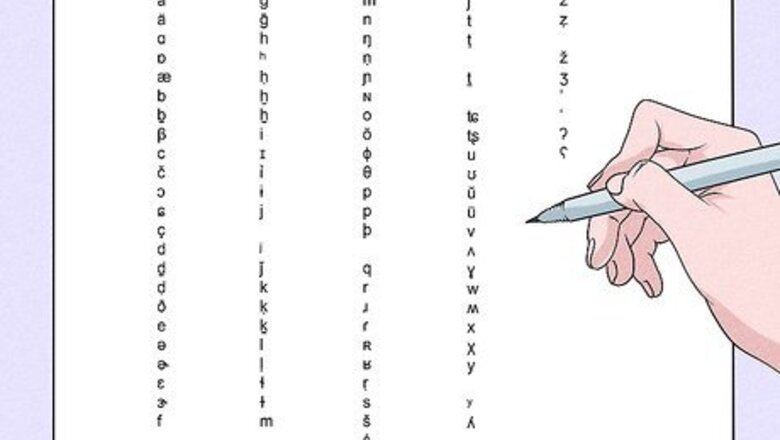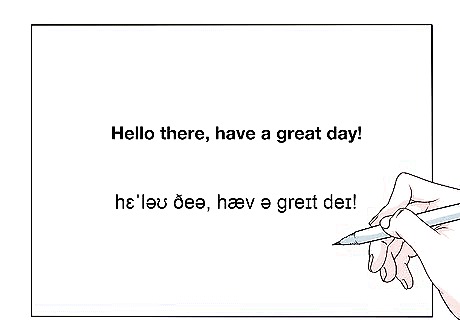
views

Write out all of the symbols in order. If you create a list of all the symbols in their chronological sound order, or in the order which you feel you have learnt them in, then you will be able to see all of the information that you need to learn at once and can keep this as a reference material which can be kept in one place. Write beside each symbol an example of a word which would use it - this can be in your first language or a secondary (whichever you feel most comfortable with). Also write beside each symbol a clear explanation which will work with the example you have written to ensure you can understand quickly and readily what each IPA symbol means and how it can be used successfully.

Group relevant symbols together. Once you have your list of sample symbols, you can then begin to transfer this to experimental exercises which will reveal how you think about the process of learning languages, enabling you to begin memorising them more efficiently. Group together the symbols you think are relevant - such as open and closed vowel sounds, which should all go in to the same category. You could also group specific sounds under language subtitles - e.g. how does the German umlaut sound on particular vowels?

Keep these in plain sight for as often as possible. Learning subconsciously is perhaps one of the greatest assets we as humans possess. Because if you use these exercises as posters for example, they will constantly be a part of your surroundings and you will be able to pay attention to this with easy access, hence it will not feel too much like revision. Make it suitable to your learning style - if you are a visual learner, colour code things and if you need to hear something, perhaps you could put together playlists that have a really specific example of a certain IPA symbol in the songs.

Put them into context, by writing them out. For example, get a poem in your first language and write out the IPA beneath the lines. Then speak it through to check if you are correct. Push yourself even further by attempting to apply IPA mentally when listening to music or to a movie. Compare how sounds of a certain symbol differ to others and remember the contrast for future use. Apply the skill to other languages also - it is an incredibly useful skill which can unlock many doors in the modern foreign languages, and provide a lot of foundation work on which to begin speaking one. Keep up these exercises and attempt to further use IPA from memory when doing so. The listening exercises mean you will not have your paper reference to help you, so this can be an advantage.

Practice and memorize. Depending on how you learn, there are many methods to begin memorising the IPA symbols (such as the posters or listening exercises mentioned earlier) but sometimes you will need to revert to the old, applicable and easy methods, such as copying out the symbols over and over in order to remember their meanings. If you keep up some sort of repetitive behaviour (like writing things out) make sure you have short regular test exercises from memory so that you can track your progress and see where your weaker areas are. Focus on your weaker areas - if you already know the symbol for an open E sound (a backwards 3) then there is no sense in writing this out over and over. Instead focus on an area you know you have been struggling with, such as double consonants.

















Comments
0 comment